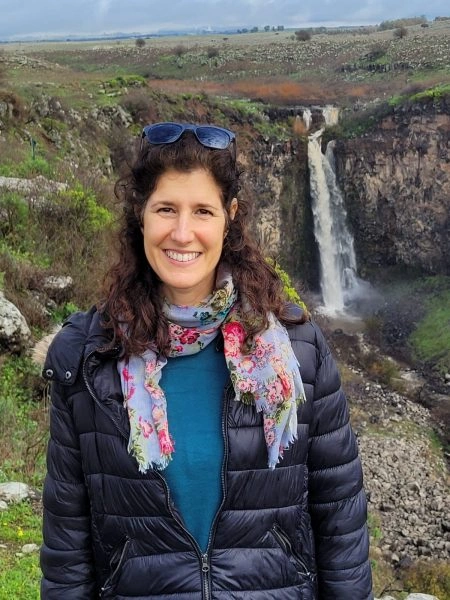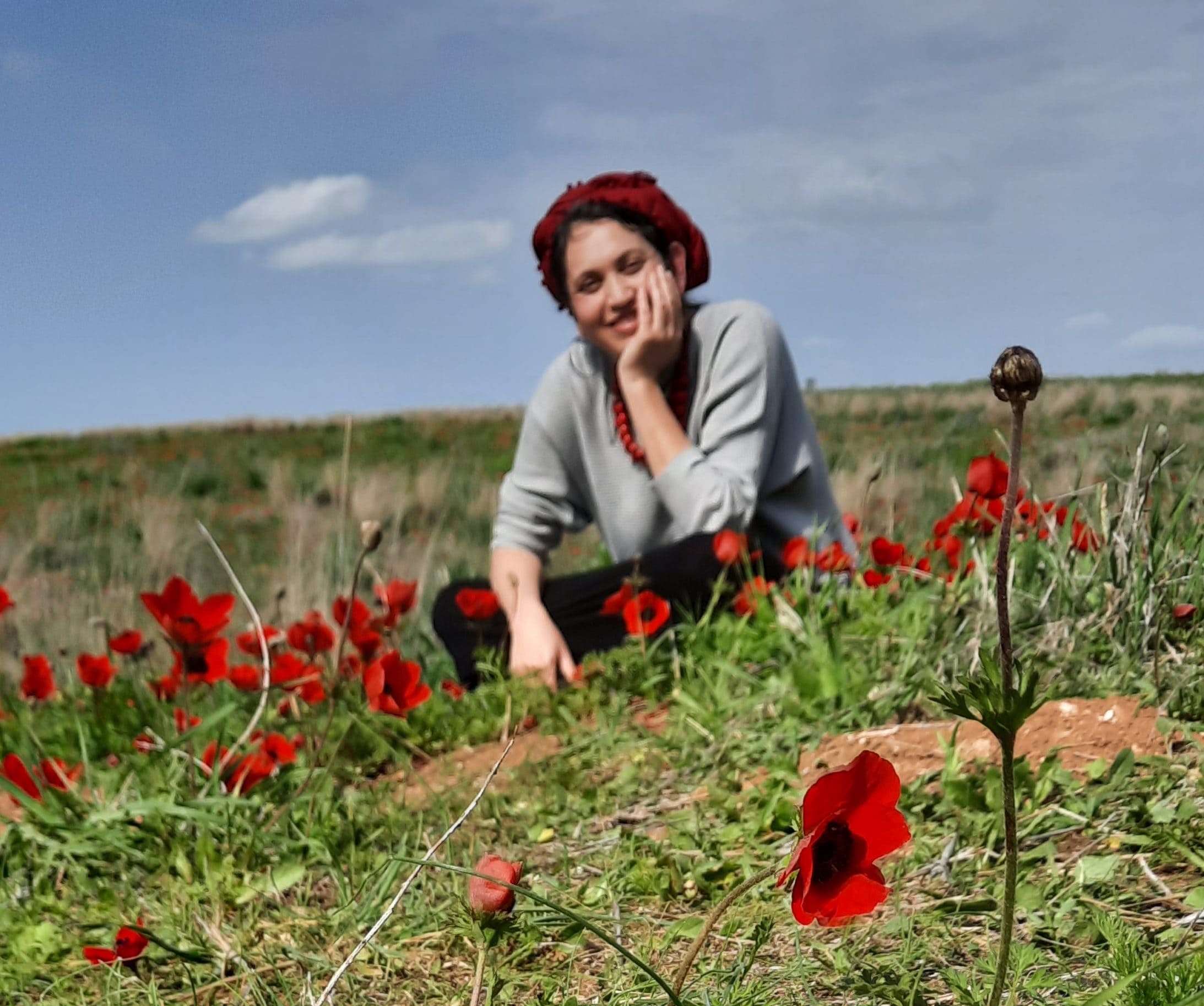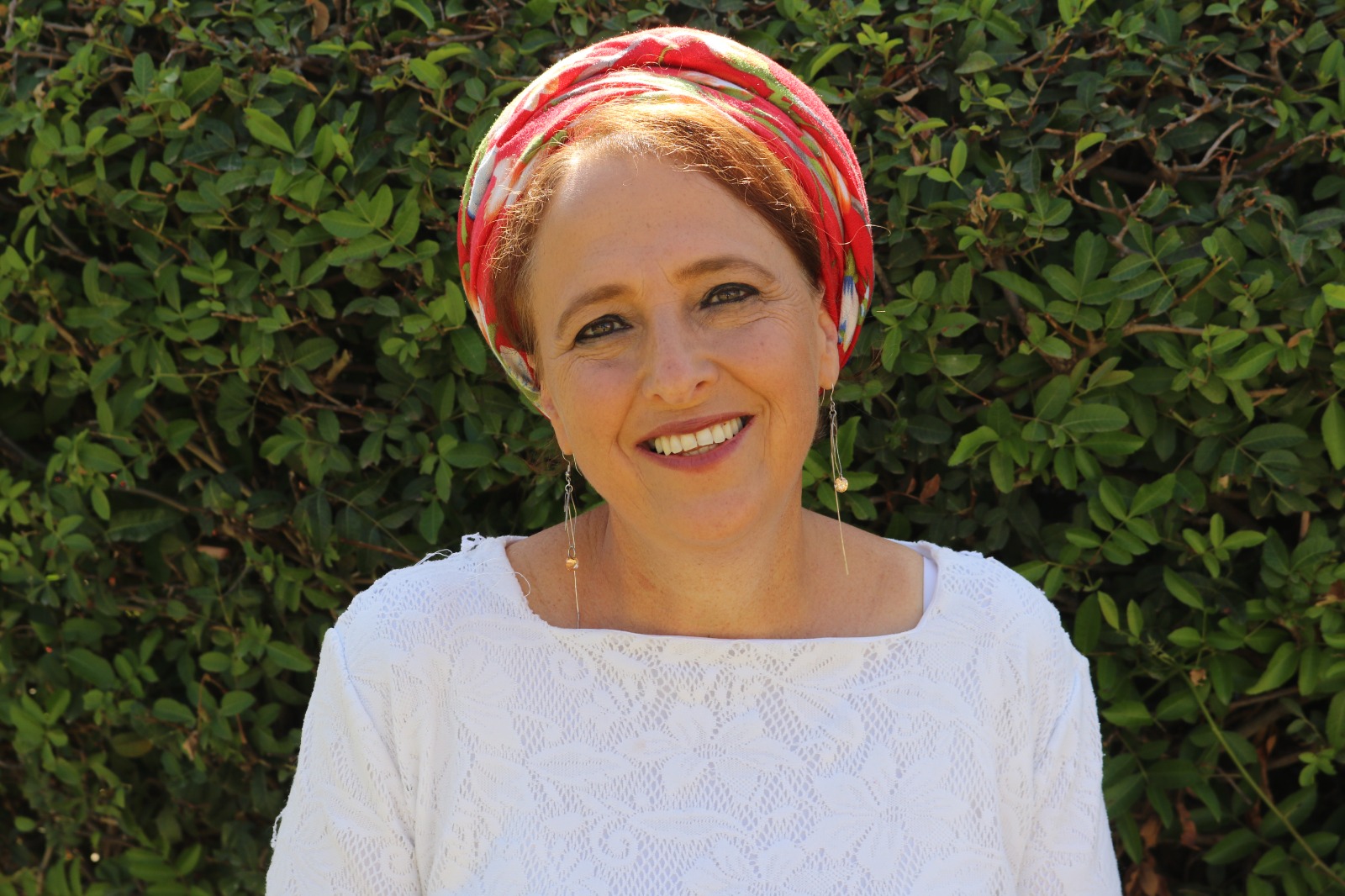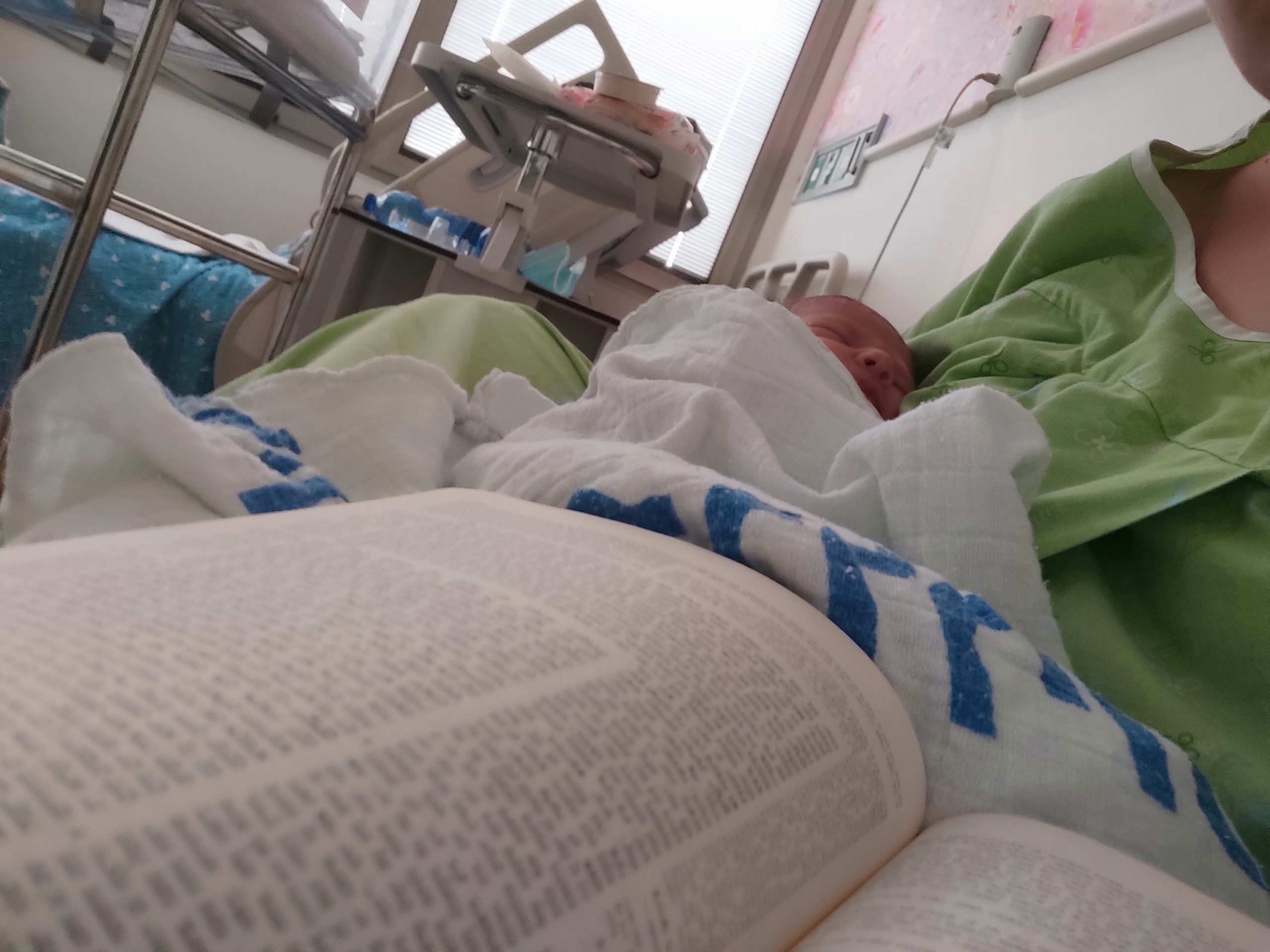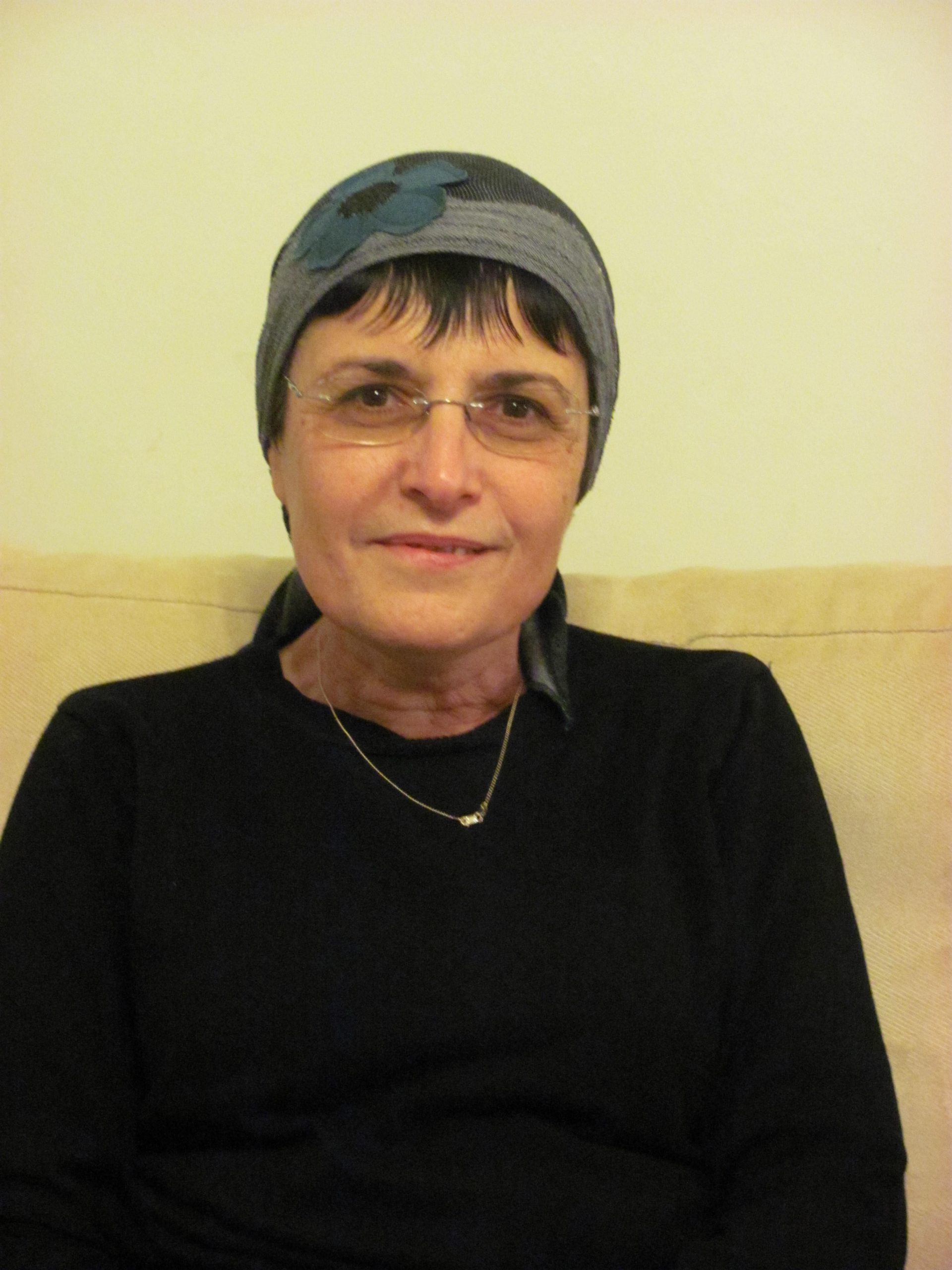סוכה ה
וְתַנְיָא, רַבִּי יוֹסֵי אוֹמֵר: מֵעוֹלָם לֹא יָרְדָה שְׁכִינָה לְמַטָּה, וְלֹא עָלוּ מֹשֶׁה וְאֵלִיָּהוּ לַמָּרוֹם, שֶׁנֶּאֱמַר: ״הַשָּׁמַיִם שָׁמַיִם לַה׳ וְהָאָרֶץ נָתַן לִבְנֵי אָדָם״.
and it is taught in a baraita that Rabbi Yosei says: The Divine Presence never actually descended below, and Moses and Elijah never actually ascended to heaven on high, as it is stated: “The heavens are the heavens of the Lord, and the earth He gave to the children of man” (Psalms 115:16), indicating that these are two distinct domains. Apparently, from ten handbreadths upward is considered a separate domain. Consequently, any sukka that is not at least ten handbreadths high is not considered an independent domain and is unfit.
וְלֹא יָרְדָה שְׁכִינָה לְמַטָּה? וְהָכְתִיב: ״וַיֵּרֶד ה׳ עַל הַר סִינַי״! לְמַעְלָה מֵעֲשָׂרָה טְפָחִים. וְהָכְתִיב: ״וְעָמְדוּ רַגְלָיו בַּיּוֹם הַהוּא עַל הַר הַזֵּיתִים״! לְמַעְלָה מֵעֲשָׂרָה טְפָחִים.
The Gemara asks: And did the Divine Presence never descend below ten handbreadths? But isn’t it written: “And God descended onto Mount Sinai” (Exodus 19:20)?
The Gemara answers: Although God descended below, He always remained ten handbreadths above the ground. Since from ten handbreadths and above it is a separate domain, in fact, the Divine Presence never descended to the domain of this world.
The Gemara asks: But isn’t it written: “And on that day His feet will stand on the Mount of Olives” (Zechariah 14:4)? The Gemara answers: Here, too, He will remain ten handbreadths above the ground.
וְלֹא עָלוּ מֹשֶׁה וְאֵלִיָּהוּ לַמָּרוֹם? וְהָכְתִיב: ״וּמֹשֶׁה עָלָה אֶל הָאֱלֹהִים״! לְמַטָּה מֵעֲשָׂרָה. וְהָכְתִיב: ״וַיַּעַל אֵלִיָּהוּ בַּסְעָרָה הַשָּׁמָיִם״! לְמַטָּה מֵעֲשָׂרָה. וְהָכְתִיב: ״מְאַחֵז פְּנֵי כִּסֵּא פַּרְשֵׁז עָלָיו עֲנָנוֹ״, וְאָמַר רַבִּי תַּנְחוּם: מְלַמֵּד שֶׁפֵּירַשׂ שַׁדַּי מִזִּיו שְׁכִינָתוֹ וַעֲנָנוֹ עָלָיו! לְמַטָּה מֵעֲשָׂרָה.
The Gemara asks: And did Moses and Elijah never ascend to the heavens on high? But isn’t it written: “And Moses went up to God” (Exodus 19:3)?
The Gemara answers: Nevertheless, he remained below ten handbreadths adjacent to the ground.
The Gemara asks: But isn’t it written: “And Elijah went up by a whirlwind heavenward” (II Kings 2:11)?
The Gemara answers: Here, too, it was below ten handbreadths.
The Gemara asks: But isn’t it written: “He grasps the face of the throne, and spreads His cloud upon him” (Job 26:9)? And Rabbi Tanḥum said: This teaches that the Almighty spread of the radiance of His Divine Presence and of His cloud upon him. Apparently, Moses was in the cloud with God.
The Gemara answers: Here, too, it was below ten handbreadths.
מִכׇּל מָקוֹם ״מְאַחֵז פְּנֵי כִּסֵּא״ כְּתִיב! אִישְׁתַּרְבּוֹבֵי אִישְׁתַּרְבַּב לֵיהּ כִּסֵּא עַד עֲשָׂרָה, וּנְקַט בֵּיהּ.
The Gemara asks: In any case: “He grasps the face of the throne,” is written, indicating that Moses took hold of the Throne of Glory. The Gemara rejects this: The throne was extended for him down to ten handbreadths and Moses grasped it; however, he remained below ten handbreadths. And since the Divine Presence speaks to Moses from above the Ark cover ten handbreadths above the ground, clearly a height of ten handbreadths is a distinct domain.
בִּשְׁלָמָא אָרוֹן תִּשְׁעָה, דִּכְתִיב: ״וְעָשׂוּ אֲרוֹן עֲצֵי שִׁטִּים אַמָּתַיִם וָחֵצִי אׇרְכּוֹ וְאַמָּה וָחֵצִי רׇחְבּוֹ וְאַמָּה וָחֵצִי קוֹמָתוֹ״. אֶלָּא כַּפּוֹרֶת טֶפַח, מְנָלַן? דְּתָנֵי רַבִּי חֲנִינָא: כׇּל הַכֵּלִים שֶׁעָשָׂה מֹשֶׁה, נָתְנָה בָּהֶן תּוֹרָה מִדַּת אׇרְכָּן וּמִדַּת רׇחְבָּן וּמִדַּת קוֹמָתָן. כַּפּוֹרֶת, מִדַּת אׇרְכָּהּ וּמִדַּת רׇחְבָּהּ — נָתְנָה, מִדַּת קוֹמָתָהּ — לֹא נָתְנָה.
The Gemara wonders about the proof offered: Granted, the height of the Ark was nine handbreadths, as it is written: “And they shall make an Ark of acacia wood; two cubits and a half shall be its length, and a cubit and a half its breadth, and a cubit and a half its height” (Exodus 25:10), and one and a half cubits equal nine handbreadths. However, from where do we derive the fact that the thickness of the Ark cover was one handbreadth? The Torah never states its dimensions explicitly, as Rabbi Ḥanina taught: For all the vessels that Moses crafted for the Tabernacle, the Torah provided in their regard the dimension of their length, the dimension of their width, and the dimension of their height. However, for the Ark cover, the Torah provided the dimension of its length and the dimension of its width; but the Torah did not provide the dimension of its height.
צֵא וּלְמַד מִפָּחוּת שֶׁבַּכֵּלִים, שֶׁנֶּאֱמַר: ״וְעָשִׂיתָ לּוֹ מִסְגֶּרֶת טֹפַח סָבִיב״, מָה לְהַלָּן טֶפַח, אַף כָּאן טֶפַח. וְנֵילַף מִכֵּלִים גּוּפַיְיהוּ! תָּפַשְׂתָּ מְרוּבֶּה — לֹא תָּפַשְׂתָּ, תָּפַשְׂתָּ מוּעָט — תָּפַשְׂתָּ.
The Gemara answers: Go out and learn from the smallest dimension mentioned in connection with any of the Tabernacle vessels, as it is stated with regard to the shewbread table: “And you shall make unto it a border of a handbreadth around” (Exodus 25:25). Just as there, the frame measures one handbreadth, so too, here, the thickness of the Ark cover measures a single handbreadth. The Gemara asks: And let us derive the thickness of the Ark cover from the vessels themselves, the smallest of which measures a cubit. The Gemara answers: If you grasped many, you did not grasp anything; if you grasped few, you grasped something. If there are two possible sources from which to derive the dimension of the Ark cover, then without conclusive proof one may not presume that the Torah intended to teach the larger dimension. Rather, the presumption is that the Torah is teaching the smaller dimension, which is included in the larger measure.
וְנֵילַף מִצִּיץ, דְּתַנְיָא: צִיץ דּוֹמֶה כְּמִין טַס שֶׁל זָהָב, וְרָחָב שְׁתֵּי אֶצְבָּעוֹת וּמוּקָּף מֵאֹזֶן לְאֹזֶן, וְכָתוּב עָלָיו שְׁתֵּי שִׁיטִין: ׳יוֹד הֵא׳ מִלְּמַעְלָה, וְ׳קֹדֶשׁ לָמֶד׳ מִלְּמַטָּה. וְאָמַר רַבִּי אֱלִיעֶזֶר בְּרַבִּי יוֹסֵי: אֲנִי רְאִיתִיו בְּרוֹמִי, וְכָתוּב עָלָיו ״קֹדֶשׁ לַה׳״ בְּשִׁיטָה אַחַת!
The Gemara asks: If so, let us derive the thickness of the Ark cover from the frontplate, which is even smaller than a handbreadth, as it is taught in a baraita: The frontplate is a type of plate made of gold that is two fingerbreadths wide and stretches from ear to ear. And written upon it are two lines: The letters yod, heh, vav, heh, the name of God, above; and the word kodesh, spelled kuf, dalet, shin, followed by the letter lamed, below. Together it spelled kodesh laHashem, meaning: Sacred to the Lord, with yod, heh, vav, heh written on the upper line in deference to the name of God. Rabbi Eliezer, son of Rabbi Yosei, said: I saw the frontplate in the emperor’s treasury in Rome, where it was taken together with the other Temple vessels when the Temple was destroyed, and upon it was written: Sacred to the Lord, on one line. Why not derive the thickness of the Ark cover from the frontplate and say that it was only two fingerbreadths?
דָּנִין כְּלִי מִכְּלִי, וְאֵין דָּנִין כְּלִי מִתַּכְשִׁיט.
The Gemara answers: One derives the dimension of a vessel from the dimension of a vessel, and one does not derive the dimension of a vessel from the dimension of an ornament. The frontplate is not one of the Tabernacle vessels but one of the ornaments of the High Priest.
וְנֵילַף מִזֵּר. דְּאָמַר מָר: זֵר מַשֶּׁהוּ! דָּנִין כְּלִי מִכְּלִי, וְאֵין דָּנִין כְּלִי מֵהֶכְשֵׁר כְּלִי. אִי הָכִי, מִסְגֶּרֶת נָמֵי הֶכְשֵׁר כְּלִי הוּא! מִסְגַּרְתּוֹ לְמַטָּה הָיְתָה.
The Gemara suggests: Let us derive the thickness of the Ark cover from the crown featured atop several of the Tabernacle vessels, as the Master said: This crown, with regard to which the Torah did not specify its dimensions, could be any size. The Gemara answers: One derives the dimension of a vessel from the dimension of a vessel, and one does not derive the dimension of a vessel from the dimension of the finish of a vessel that serves decorative purposes. The Gemara asks: If it is so that one does not derive the dimensions of a vessel from the dimensions of the finish of a vessel, then how can dimensions be derived from the border of the table, which is also the finish of a vessel and not an integral part of the table? The Gemara answers: The border of the table was below, between the legs of the table, and the tabletop rested upon it. As it supports the table, it is an integral part of the table and not merely decoration.
הָנִיחָא לְמַאן דְּאָמַר מִסְגַּרְתּוֹ לְמַטָּה הָיְתָה, אֶלָּא לְמַאן דְּאָמַר מִסְגַּרְתּוֹ לְמַעְלָה הָיְתָה, מַאי אִיכָּא לְמֵימַר? הַאי הֶכְשֵׁר כְּלִי הוּא!
The Gemara asks: This works out well according to the one who said that its border was below the tabletop; however, according to the one who said that its border was above the tabletop, what can be said? According to that opinion, this border is indeed the finish of a vessel.
אֶלָּא: דָּנִין דָּבָר שֶׁנָּתְנָה בּוֹ תּוֹרָה מִדָּה מִדָּבָר שֶׁנָּתְנָה בּוֹ תּוֹרָה מִדָּה, וְאַל יוֹכִיחוּ צִיץ וְזֵר, שֶׁלֹּא נִתְּנָה בָּהֶן תּוֹרָה מִדָּה כְּלָל.
Rather, the thickness of the Ark cover must be derived from a different source. One derives the missing dimensions of an object for which the Torah provided part of its dimension, e.g., the Ark cover, for which the Torah provided the dimensions of length and width, from an object for which the Torah provided its dimension, e.g., the border of the table. And the frontplate and the crown, for which the Torah did not provide any dimension at all, and their dimensions were determined by the Sages, will not prove anything. It is certainly appropriate to derive the dimension of the thickness of the Ark cover from that which was stated clearly in the Torah.
רַב הוּנָא אָמַר, מֵהָכָא: ״עַל פְּנֵי הַכַּפּוֹרֶת קֵדְמָה״, וְאֵין פָּנִים פָּחוֹת מִטֶּפַח.
Rav Huna said that the thickness of the Ark cover is derived from here: “Upon the face of [penei] the Ark cover on the east” (Leviticus 16:14), and there is no face [panim] of a person that measures less than one handbreadth.
וְאֵימָא כְּאַפֵּי
The Gemara asks: And why say that the face in the verse is specifically the face of a person? Say that the Ark cover is like the face
דְּבַר יוֹכָנִי! תָּפַשְׂתָּ מְרוּבֶּה לֹא תָּפַשְׂתָּ, תָּפַשְׂתָּ מוּעָט תָּפַשְׂתָּ. וְאֵימָא כְּאַפֵּי דְּצִיפַּרְתָּא דְּזוּטַר טוּבָא! אֲמַר רַב אַחָא בַּר יַעֲקֹב: רַב הוּנָא ״פְּנֵי״ ״פְּנֵי״ גָּמַר. כְּתִיב הָכָא: ״אֶל פְּנֵי הַכַּפּוֹרֶת״, וּכְתִיב הָתָם: ״מֵאֵת פְּנֵי יִצְחָק אָבִיו״.
of a bird called bar Yokhani, whose face is significantly larger than a handbreadth? The Gemara rejects this suggestion: If you grasped many, you did not grasp anything; if you grasped few, you grasped something. The Gemara asks: If so, say that it is like the face of a bird, which is extremely small? Rav Aḥa bar Ya’akov said: Rav Huna derives that the thickness of the Ark cover was one handbreadth not through an actual comparison to the real faces of different creatures but rather by means of a verbal analogy between the terms penei and penei written in different places in the Torah. It is written here: “Before [penei] the Ark cover” (Leviticus 16:2), and it is written there: “From the presence of [penei] Isaac his father” (Genesis 27:30). The dimension of the Ark cover is like that of the face of a person, a handbreadth.
וְנֵילַף מִפָּנִים שֶׁל מַעְלָה, דִּכְתִיב: ״כִּרְאוֹת פְּנֵי אֱלֹהִים וַתִּרְצֵנִי״! תָּפַשְׂתָּ מְרוּבֶּה לֹא תָּפַשְׂתָּ, תָּפַשְׂתָּ מוּעָט תָּפַשְׂתָּ.
The Gemara suggests: And let us derive a verbal analogy from the face of God, as it is written: “For I have seen your face as one sees the face of [penei] God, and you were pleased with me” (Genesis 33:10). The term penei is used with regard to the face of God as well. The Gemara rejects this suggestion: If you grasped many, you did not grasp anything; if you grasped few, you grasped something.
וְנֵילַף מִכְּרוּב, דִּכְתִיב: ״אֶל הַכַּפּוֹרֶת יִהְיוּ פְּנֵי הַכְּרוּבִים״!
The Gemara suggests: And let us derive a verbal analogy from the face of the cherub in the Tabernacle and the Temple, as it is written: “Toward the Ark cover shall be the faces of [penei] the cherubs” (Exodus 25:20), and their faces were presumably smaller than one handbreadth.
אָמַר רַב אַחָא בַּר יַעֲקֹב: גְּמִירִי אֵין פְּנֵי כְרוּבִים פְּחוּתִין מִטֶּפַח, וְרַב הוּנָא נָמֵי מֵהָכָא גְּמִיר.
Rav Aḥa bar Ya’akov said: We have learned through tradition that the faces of the cherubs were not smaller than a handbreadth, and indeed Rav Huna derived the thickness of the Ark cover from here as well, i.e., from the verbal analogy between the instances of the word penei in the verses: “Upon the face of [penei] the Ark cover on the east” and: “The faces [penei] of the cherubs,” indicating that both are the same size.
וּמַאי כְּרוּב? אָמַר רַבִּי אֲבָהוּ: כְּרָבְיָא, שֶׁכֵּן בְּבָבֶל קוֹרִין לְיָנוֹקָא רָבְיָא.
Apropos the cherubs, the Gemara asks: And what is the form of the face of a cherub [keruv]? Rabbi Abbahu said: Like that of a child [keravya], as in Babylonia one calls a child ravya.
אֲמַר לֵיהּ אַבָּיֵי: אֶלָּא מֵעַתָּה, דִּכְתִיב: ״פְּנֵי הָאֶחָד פְּנֵי הַכְּרוּב וּפְנֵי הַשֵּׁנִי פְּנֵי אָדָם״, הַיְינוּ כְּרוּב הַיְינוּ אָדָם! אַפֵּי רַבְרְבֵי וְאַפֵּי זוּטְרֵי.
Abaye said to him: But if what you say is so, what is the meaning of that which is written about the faces of the celestial beasts drawing the celestial chariot: “The face of the first was the face of the cherub, and the face of the second was the face of a man” (Ezekiel 10:14)? According to your explanation, this face of the cherub is the same as that face of a man. The Gemara answers: Although two of the celestial beasts drawing that chariot had the face of a man, the difference between them is that one was a large face and one was a small face. In other words, the face described as the face of a man was the face of an adult, and the face described as the face of a cherub was that of a child. This is the source that the Ark and the Ark cover were ten handbreadths high.
וּמִמַּאי דַּחֲלָלַהּ עֲשָׂרָה בַּר מִסְּכָכַהּ? אֵימָא בַּהֲדֵי סְכָכַהּ!
However, with regard to the application of this measure to the halakhot of sukka, the Gemara asks: And from where is it derived that the interior space of the sukka must be ten handbreadths high without the thickness of the roofing? Say that the ten handbreadths of the sukka are with the thickness of the roofing. Just as the ten handbreadths of the Ark are measured from the bottom of the Ark to the top of the Ark cover, let the sukka be measured to the top of the roofing.
אֶלָּא מִבֵּית עוֹלָמִים גָּמַר, דִּכְתִיב: ״וְהַבַּיִת אֲשֶׁר בָּנָה הַמֶּלֶךְ שְׁלֹמֹה לַה׳ שִׁשִּׁים אַמָּה אׇרְכּוֹ וְעֶשְׂרִים רׇחְבּוֹ וּשְׁלֹשִׁים אַמָּה קוֹמָתוֹ״. וּכְתִיב: ״קוֹמַת הַכְּרוּב הָאֶחָד עֶשֶׂר בָּאַמָּה וְכֵן הַכְּרוּב הַשֵּׁנִי״, וְתַנְיָא: מָה מָצִינוּ בְּבֵית עוֹלָמִים כְּרוּבִים בִּשְׁלִישׁ הַבַּיִת הֵן עוֹמְדִין. מִשְׁכָּן נָמֵי — כְּרוּבִים שְׁלִישׁ הַבַּיִת הֵן עוֹמְדִין.
Rather, the dimension of the sukka is not derived from the Ark; one instead derived it from the dimensions of the eternal Temple, as it is written: “And the house which King Solomon built for the Lord, its length was sixty cubits, and its breadth twenty cubits, and its height thirty cubits” (I Kings 6:2). And it is written: “The height of the first cherub was ten cubits, and likewise was the second cherub” (I Kings 6:26). And it is taught in a baraita: Just as we find in the eternal Temple that the cherubs stand reaching one-third the height of the Temple, as each cherub was ten cubits high and the Temple was thirty cubits high, in the Tabernacle as well, the cherubs stand reaching one-third the height of the Tabernacle.
מִשְׁכָּן כַּמָּה הָוֵי — עֶשֶׂר אַמּוֹת, דִּכְתִיב: ״עֶשֶׂר אַמּוֹת אוֹרֶךְ הַקָּרֶשׁ״, כַּמָּה הָוֵי לְהוּ — שִׁיתִּין פּוּשְׁכֵי, תִּלְתֵּיהּ כַּמָּה הָוֵי — עֶשְׂרִים פּוּשְׁכֵי, דַּל עַשְׂרָה דְּאָרוֹן וְכַפּוֹרֶת, פָּשׁוּ לְהוּ עַשְׂרָה, וּכְתִיב: ״וְהָיוּ הַכְּרוּבִים פּוֹרְשֵׂי כְנָפַיִם לְמַעְלָה סוֹכְכִים בְּכַנְפֵיהֶם עַל הַכַּפּוֹרֶת״, קַרְיֵיהּ רַחֲמָנָא סְכָכָה לְמַעְלָה מֵעֲשָׂרָה.
And to calculate: How many cubits high was the Tabernacle? It was ten cubits, as it is written: “Ten cubits shall be the length of a beam” (Exodus 26:16). How many handbreadths do these ten cubits contain? They contain sixty handbreadths. And one third of that total is how many? It is twenty handbreadths. Subtract from this figure ten handbreadths of the Ark and the Ark cover upon which the cherubs stood, and ten handbreadths remain, which was the height of each individual cherub. And it is written: “And the cherubs shall spread out their wings upward, screening [sokhekhim] the Ark cover with their wings” (Exodus 25:20). Here the Merciful One is referring to the wings using the terminology of roofing [sekhakha] specifically when they are ten handbreadths above the Ark cover. This is a source that the roofing of the sukka is placed at least ten handbreadths high.
מִמַּאי דְּגַדְּפִינְהוּ עִילָּוֵי רֵישַׁיְיהוּ קָיְימִי, דִּלְמָא לַהֲדֵי רֵישַׁיְיהוּ קָיְימִי! אָמַר רַב אַחָא בַּר יַעֲקֹב: ״לְמַעְלָה״ כְּתִיב. וְאֵימָא דְּמִידְּלֵי טוּבָא? מִי כְּתִיב ״לְמַעְלָה לְמַעְלָה״?
The Gemara asks: And from where is it known that their wings were spread above their heads, from which it is derived that roofing is ten handbreadths high? Perhaps they were spread level with their heads. In that case, the ten handbreadths derived would include the roofing, leaving the interior space of the sukka less than ten handbreadths high. Rav Aḥa bar Ya’akov said that it is written: “Spread out their wings upward,” indicating that the wings were above their heads. The Gemara asks: If so, say that the wings were extremely high to an unspecified height. The Gemara answers: Does the verse say: Upward, upward? It says upward only once, meaning slightly over their heads. There is proof from the verses that the roofing was at least ten handbreadths off the ground.
הָנִיחָא לְרַבִּי מֵאִיר, דְּאָמַר: כׇּל הָאַמּוֹת הָיוּ בֵּינוֹנִיּוֹת. אֶלָּא לְרַבִּי יְהוּדָה דְּאָמַר, אַמָּה שֶׁל בִּנְיָן שִׁשָּׁה טְפָחִים, וְשֶׁל כֵּלִים חֲמִשָּׁה — מַאי אִיכָּא לְמֵימַר?
The Gemara asks: This calculation works out well according to Rabbi Meir, who said that all the cubits in the Tabernacle and the Temple were intermediate cubits, consisting of six handbreadths; however, according to Rabbi Yehuda, who said that the cubit used in the dimensions of a building in the Temple was a cubit consisting of six handbreadths, but the cubit used in the dimensions of vessels was a cubit consisting of only five handbreadths, what is there to say?
אָרוֹן וְכַפּוֹרֶת כַּמָּה הָוֵי לְהוּ? תְּמָנְיָא וּפַלְגָא, פָּשׁוּ לְהוּ חַד סְרֵי וּפַלְגָא, אֵימָא סוּכָּה עַד דְּהָוְיָא חַד סְרֵי וּפַלְגָא!
Based on that calculation, how many handbreadths was the height of the Ark and the Ark cover? They totaled eight and a half handbreadths. The height of the Ark was one and a half cubits, which, based on a five-handbreadth cubit, equals seven and a half handbreadths. Including the additional handbreadth of the Ark cover, the total height is eight and a half handbreadths. If the cherubs were one third of the height of the Tabernacle, which is twenty handbreadths, eleven and a half handbreadths remain for the height of the cherubs, over which their wings were spread. Therefore, say that for a sukka to be fit for use its interior space must be eleven and a half handbreadths high. However, there is no recorded opinion that requires a sukka with that dimension.
אֶלָּא, לְרַבִּי יְהוּדָה הִלְכְתָא גְּמִירִי לַהּ. דְּאָמַר רַבִּי חִיָּיא בַּר אָשֵׁי אָמַר רַב: שִׁיעוּרִין, חֲצִיצִין, וּמְחִיצִין — הֲלָכָה לְמֹשֶׁה מִסִּינַי.
Rather, according to Rabbi Yehuda, the Sages learned the minimum height of a sukka as a halakha transmitted to Moses from Sinai. As Rabbi Ḥiyya bar Ashi said that Rav said: The measures in various areas of halakha, e.g., olive-bulk, dried fig-bulk, egg-bulk, and the various halakhot of interpositions that serve as a barrier between one’s body and the water in a ritual bath and invalidate immersions, and the dimensions and nature of halakhic partitions are all halakhot transmitted to Moses from Sinai. They were not written in the Torah; rather, they were received in the framework of the Oral Law.
שִׁיעוּרִין דְּאוֹרָיְיתָא נִינְהוּ! דִּכְתִיב: ״אֶרֶץ חִטָּה וּשְׂעוֹרָה וְגֶפֶן וּתְאֵנָה וְרִמּוֹן אֶרֶץ זֵית שֶׁמֶן וּדְבָשׁ״, וְאָמַר רַב חָנִין: כׇּל הַפָּסוּק הַזֶּה לְשִׁיעוּרִין נֶאֱמַר!
The Gemara questions this assertion: Are measures a halakha transmitted to Moses from Sinai? They are written in the Torah, as it is written: “A land of wheat, and barley, and vines, and figs, and pomegranates, a land of olive oil and honey” (Deuteronomy 8:8), and Rav Ḥanin said: This entire verse is stated for the purpose of teaching measures with regard to different halakhot in the Torah.
חִטָּה — לְבַיִת הַמְנוּגָּע, דִּתְנַן: הַנִּכְנָס לְבַיִת הַמְּנוּגָּע וְכֵלָיו עַל כְּתֵפָיו, וְסַנְדָּלָיו וְטַבְּעוֹתָיו בְּיָדוֹ — הוּא וָהֵן טְמֵאִין מִיָּד.
Wheat was mentioned as the basis for calculating the time required for one to become ritually impure when entering a house afflicted with leprosy, as we learned in a mishna: With regard to one who enters a house afflicted with leprosy of the house (see Leviticus, chapter 14), and his clothes are draped over his shoulders, and his sandals and his rings are in his hands, both he and they, the clothes, sandals, and rings, immediately become ritually impure.



